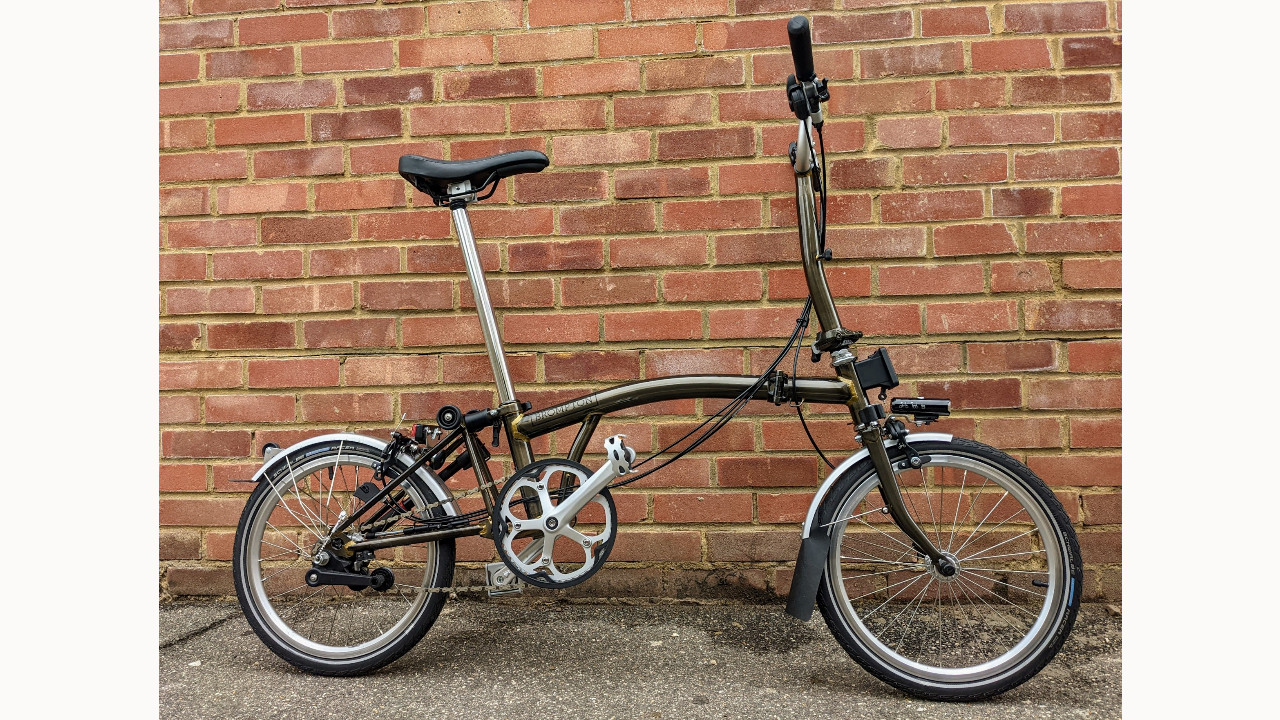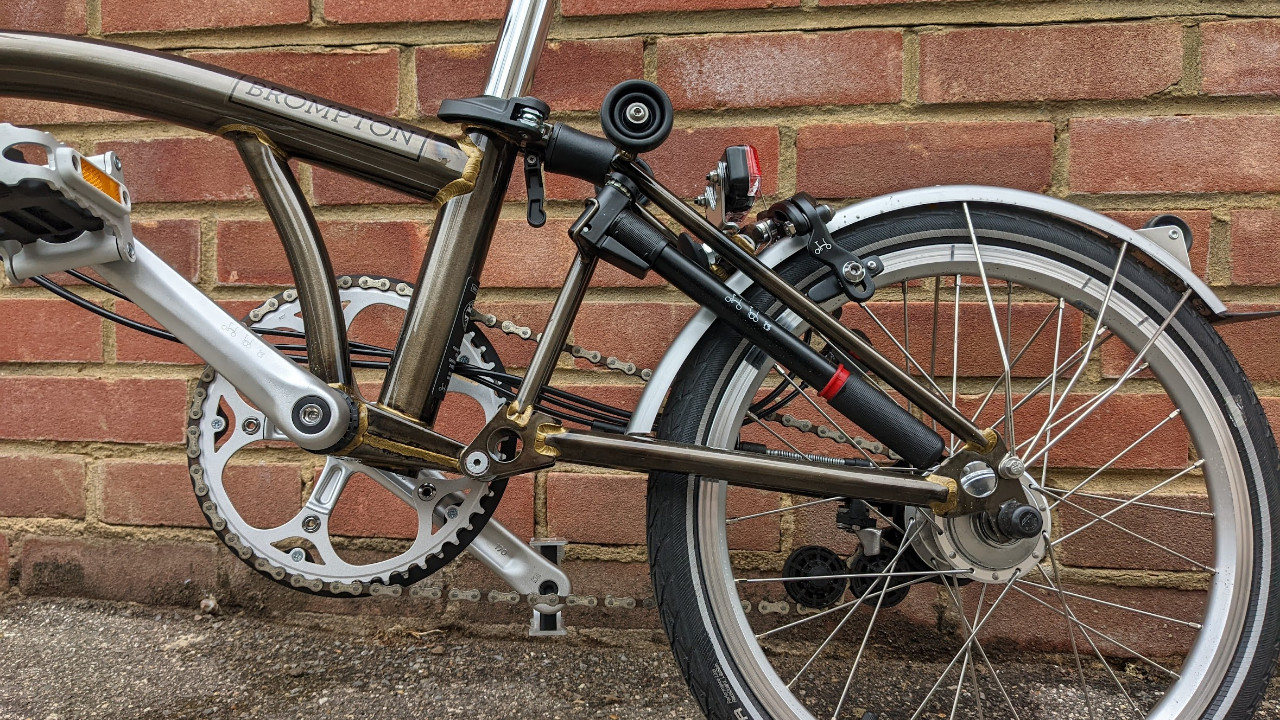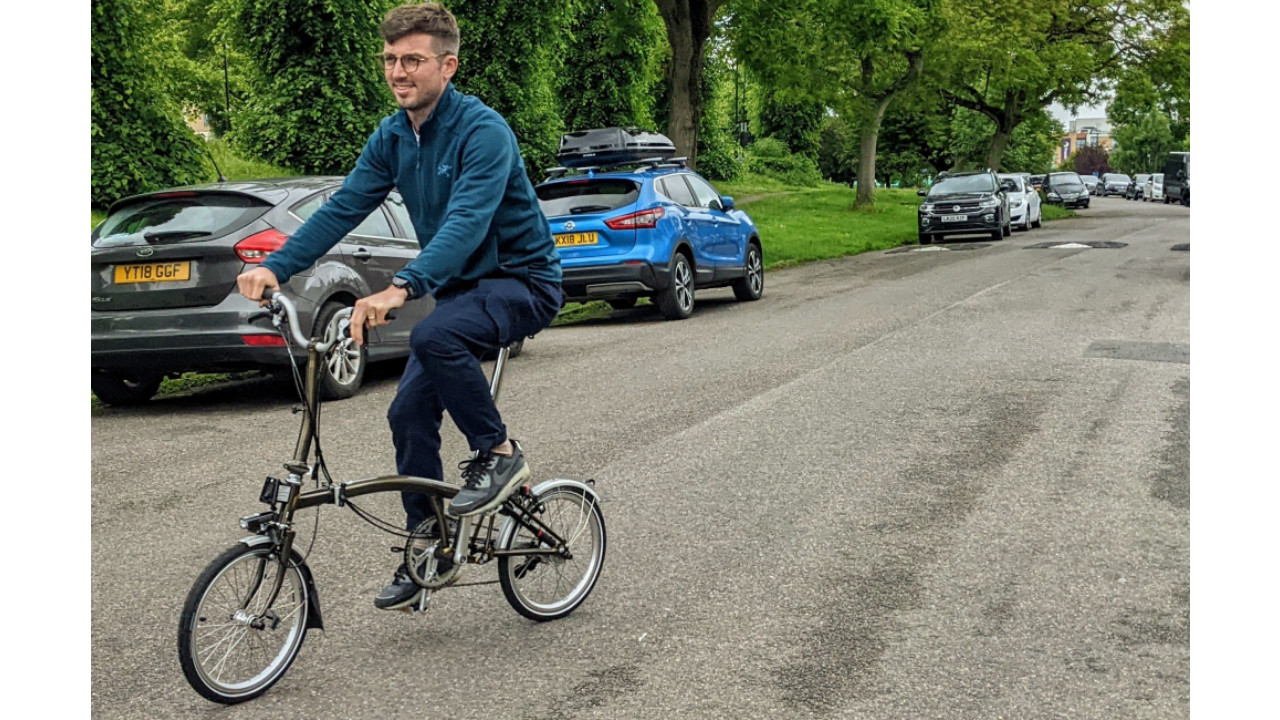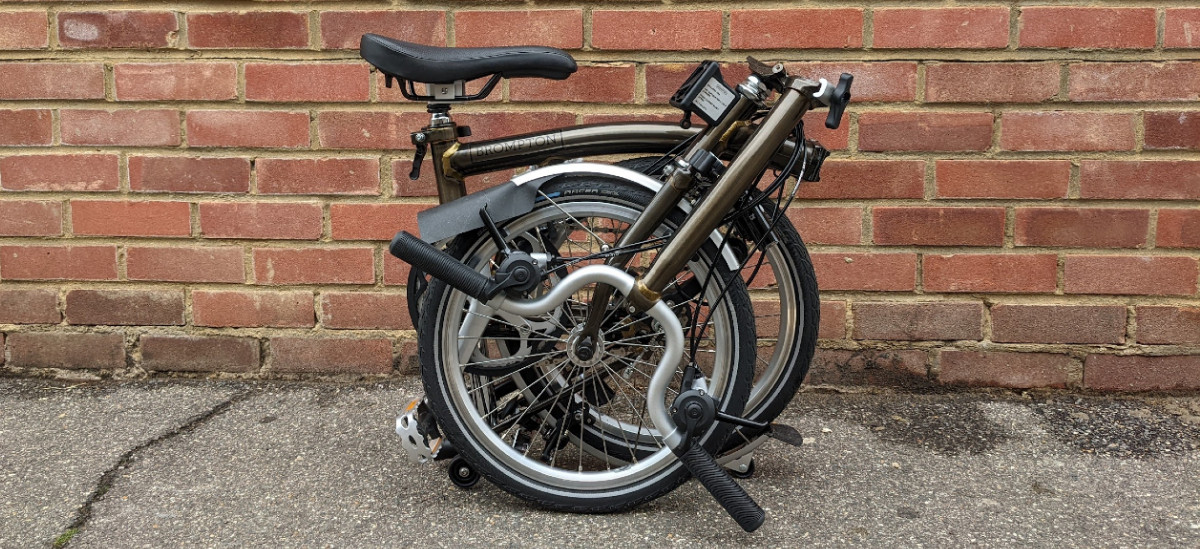Our Verdict
The rebranded M6L is the most expensive Brompton C Line model you can buy, but its adaptability means it can handle virtually anything you throw at it.
For
- Range of gears
- Comfortable on short and long rides
- Great extras, like mudguards, lights and pump
Against
- Price
- Weight
You can trust Coach
Brompton has built a reputation for being the brand that all of the best folding bikes are compared with, and for good reason. The bikes have become utilitarian workhorses favoured by train commuters and city dwellers alike because of their durability, reliability and compact nature. They can be taken on public transport or stored in compact living spaces without the footprint of a traditional, non-folding bike.
The much-lauded design has had a few tweaks since it was launched in 1976 and Brompton’s core range – the C Line – is the culmination of almost five decades of research and development. Available in three gearing set-ups – the two-speed Urban, the three-speed Utility or the six-speed Explore (which I tested) – it sits above the entry-level A Line but below the lighter, performance-focused P Line and boundary-pushing, uber-expensive T Line.
- NEWSFLASH: New Brompton Electric P Line Revealed

I’ve tested and owned numerous bikes over the years, but the Brompton C Line Explore was the first folding bike I’d welcomed into my home. As someone who doesn’t need their bike to be foldable for commuting or storage reasons, I rely on a Specialized Langster single-speed for everyday riding. So would I benefit from a Brompton?
It didn’t take long for me to see its advantages. With my normal set-up, I have to retrieve my bike from a garden shed, wheel it through my mid-terrace house, and repeat this in reverse when I return. The process takes roughly five minutes at each end of a trip, but it can sometimes be enough to dissuade me from riding – particularly if my destination is somewhere within walking distance. The Brompton solved this issue. Small enough to be folded away and stored under the stairs, it was ready to go when I needed it. While this isn’t reason enough to invest in a Brompton, it was an immediate benefit.
Another included the ability to take the bike into restaurants, bars or other venues, rather than leaving it in the street. Also, because of its adjustability, it’s not just a bike for one person and can be used by multiple people in your household – even if you’re not the same height.
Price And Availability
The rebranded C Line was announced in October 2021 and replaced model codes that Brompton had used for 45 years. Gone were initialisms that were coded descriptions of the handlebar, number of gears and additional fixtures (eg M6L for mid-rise, six gears and lights), and in their place was a word-based structure. Other than a change in stickers, the bikes are the same.
The C Line starts with the Urban model, which costs $1,490 in the US and £1,195 in the UK, and goes up to the $1,680/£1,350 Explore model that I tested. At its core, each C Line model is the same: its main frame, rear frame and fork are made from steel, it has 16in wheels with puncture-resistance Schwalbe tyres, it comes with mudguards and a front carrier block for Brompton-branded luggage, and it can be bought with low, mid or high handlebars.
The main difference is the gearing. The Explore has a wide-range six-speed drivetrain that combines a three-speed Sturmey Archer hub and a two-speed derailleur. This means that there are three big gear changes that are taken care of by an internal hub in the rear wheel, and each of these has a high and low setting that is controlled by a derailleur – the same method as the gears on most bikes.
If you’re not sure which Brompton C Line model is right for you, there’s a simple way of looking at it: you’re already spending more than $1,500/£1,000 on a folding bike, so why not spend an additional 10% or so and get six rather than two gears? While there is the additional weight (2lb/900g) to factor in, you wouldn’t notice this except on inclines, and the ability to opt for an easier gear negates this. You also get a pump on the Explore model that is conveniently stowed in the triangle of the rear frame.

Set-up
The bike arrives folded in a cardboard box, and the only thing you have to do is install the saddle on the seat post using the supplied Allen key. Once that’s in place, the bike is ready to be unfolded. Although there are instructions in the box on how to do this, I’d recommend watching a video tutorial. It’s also worth practising how to refold the bike as the order isn’t repeating the unfolding in reverse.
You’ll also find a Cateye front light included in the box, which needs to be charged before it can be used, and a pre-installed AAA-powered rear light. Installing the front light on the mudguard is as simple as clipping it onto a pre-installed mount.
The Ride
The functionality of a folding bike counts for nothing if the ride experience is poor. Fortunately, the Brompton C Line Explore doesn’t falter here – it’s one of the most fun bikes I’ve ever ridden.
On short trips that I’d have previously walked, the Brompton slashes the total journey time. Unfolding is complete in the same amount of time it takes to tie your shoelaces, and I’m at my local shops before I would be at the end of my road if on foot.
The Brompton doesn’t shine only on short rides. I tested it on longer journeys, some of 10+ miles, and it remained comfortable. At no point did I wish I was on my regular, non-folding bike. There is a bit of flex in the handlebars and steering tube to smooth out all but the worst potholes, and its low centre of gravity helped keep you in control.

The only downside was that the steering felt “twitchy” on the first few rides but you soon modify how you turn the handlebars to counter this. I was also able to put its gears through their paces on inclines in north London. While the jumps between each gear were noticeable, there was enough low-end range to tackle any ascent without having to get off and walk or spin on the pedals uncontrollably.
The top end was punchy, and you soon get up serious speed on the flat – which feels even faster on the 16in wheels. Changing gears on the internal hub took a bit of getting used to – you have to stop pedalling to go up or down – but this was due to my inexperience.
Sure, it might not be as fast as a road bike with drop-handlebars, but it's no different from a standard hybrid bike in this respect. Besides, its upright positioning means you get a good amount of airflow, so don’t turn up to your destination a sweaty mess.
Value
It’s hard to ignore the fact that the Brompton C Line Explore is $1,680/£1,350. That price makes it more expensive than any of our best commuter bike picks, and you’re left with a bike that is heavier than most, relies on rim brakes rather than disc, and has fewer gears. A large chunk of your money is spent on the folding functionality, and if you don’t need this, are you better off investing in a standard bike?
My answer, unhelpfully, is yes and no. I’ve got none of the stereotypical needs for a folding bike, but I found that I would make the choice to ride more often on the Brompton than if I was relying on my non-folding bike. It’s also a bike that can fit seamlessly into your life, rather than you having to fit your life around it. For example, you can ride somewhere safe in the knowledge that, if you need to take public transport or a taxi home, you can easily bring it back with you. It can be stowed on a train or put in the trunk/boot of a car without having to worry about pre-booking a spot or using a bike rack, and it means you’ve got another means of transport with you when you’re away.
Is It Worth It?
After my extensive testing of the Brompton, it’s easy to see why their owners become passionate advocates for the flexible steel steeds. There are cheaper alternatives available (both folding and standard commuter-focused bikes), but if you can stretch your budget, it’s worth buying the best. You won’t regret your investment and it’ll bring a smile to your face each time you unfold it.
More About Bikes
- Ride to work in style with our one of the best electric bikes
- Find advice, tips and gear recommendations for cycle communting on our cycling to work guide
- The ultimate city runaround and the best folding e-bike we’ve tried, by a country mile – the Brompton Electric review
Charlie Allenby is a journalist with a passion for pedalling. He contributes features and buying advice about cycling, and is Coach’s dedicated turbo trainer reviewer. He is also Coach’s chief whey and casein protein powder tester, trying as many brands as possible.
Charlie’s first book, Bike London, is out now. He has written for The Guardian, The Independent and BikeRadar, among others.


